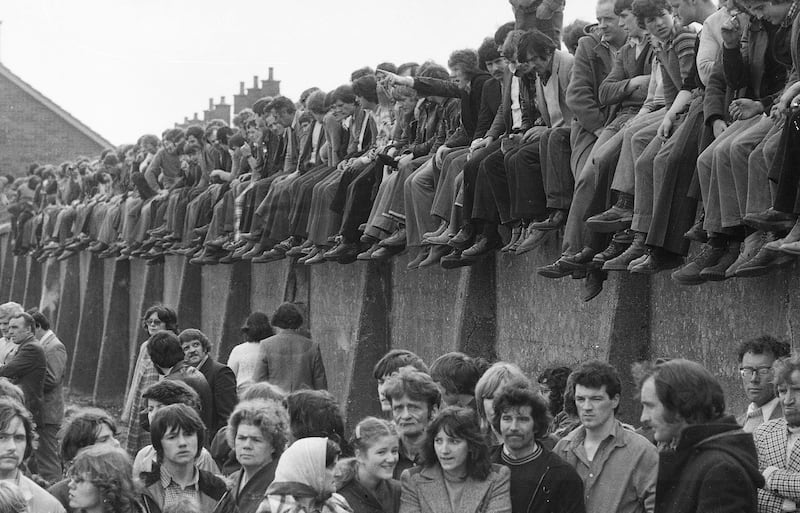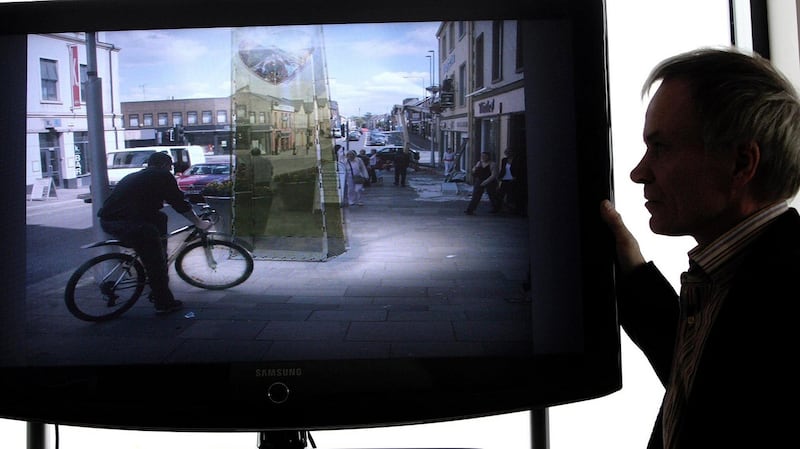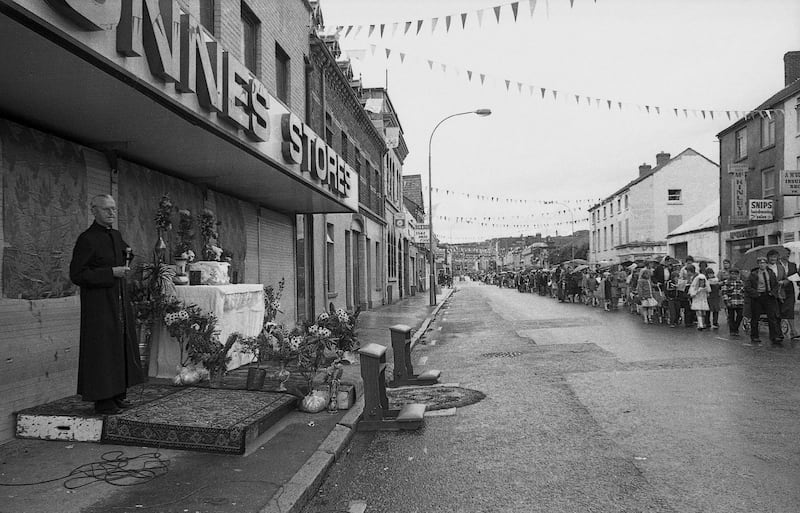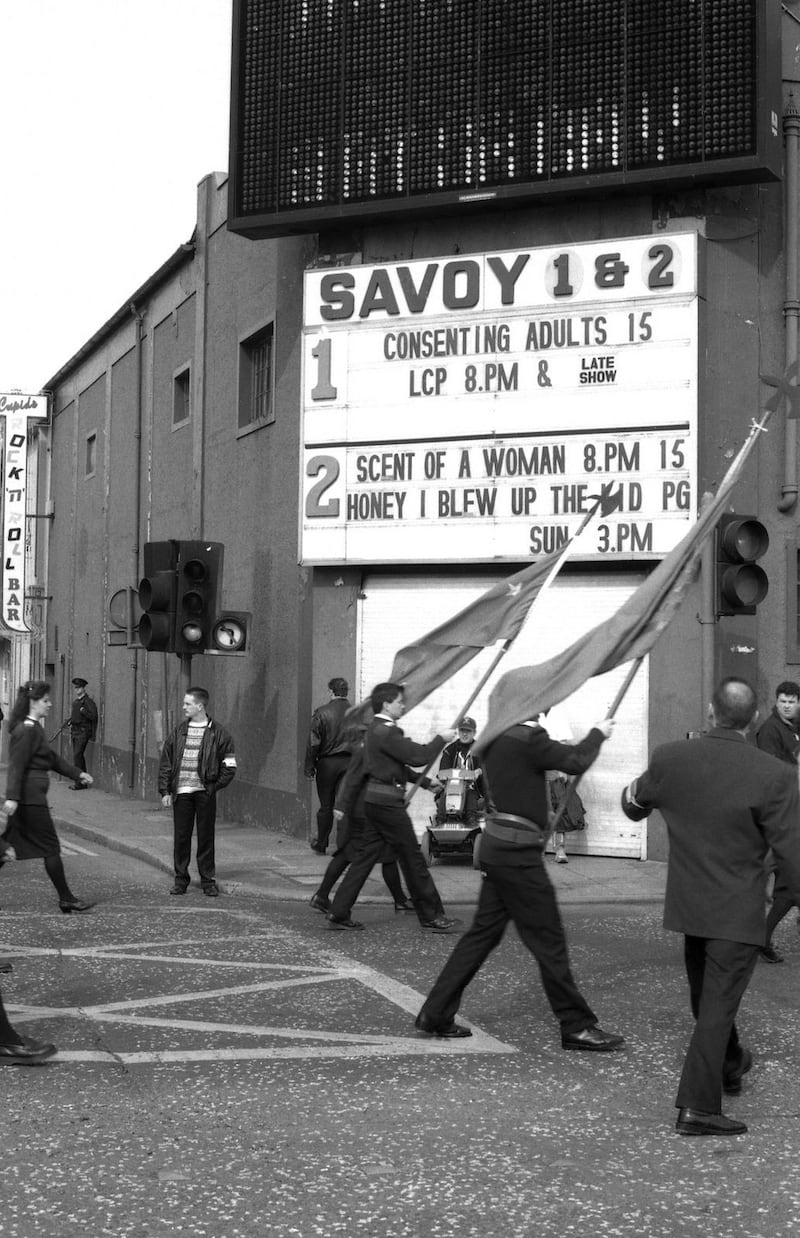One of Seán Hillen’s most shameful secrets is that he still enjoys video games. His game of choice, Operation Flashpoint, is a full immersion military simulation game which can see players crawling through undergrowth with complete warfare all around. While only a simulation for most, for Hillen the game takes on a very real-life dimension. At the sound of gunfire, he runs straight for it. A strange reaction for most yet, for a man who grew up in the midst of a war, the reaction seems even more mystifying.
Such is the character of the collagist and photographer, however, who is considered one of the most censored artists in Ireland and Britain. Mainstream media wouldn’t publish his pictures, an ugly reminder of a war many wanted to forget, while exhibiting was made difficult by the political nature of his subjects.

Hillen grew up in Newry during the height of the war in Northern Ireland. He rejects the term “the Troubles”, saying that when it was at your front door it was “much more than fucking trouble”. From the age of 17, Hillen would take to the streets in the hope of turning the destruction around him into something artistic. Years later, he still seems unsure whether his decision was “crazy, heroic or doomed” from the start.
What transpired from that decision, however, was a collection of images which would fuel not only Hillen’s career but would provoke deep reactions from people from all sides of the conflict. While Hillen’s collages are famous – Irelantis has been viewed around the world in public and private collections – they were widely censored for their depiction of life in the North and their take on the British army.

When the National Library showed more than 600 of Hillen’s images in 2012, however, 17,000 people descended on the exhibition. Unsure what the reaction to his work would be in Dublin, Hillen was taken aback. Such was the emotion at the exhibition that he was asked to come in and sit with people while they wept or told their tales. “It was just a sea of people,” he recalls. Now, a selection of the photos are being republished in a new edition of Melancholy Witness, a book first published in 2013 to acclaim in Ireland and the US.
Hillen laughs when he thinks about how all this success could have escaped him. For decades the negatives lay untouched in a plastic carrier bag with a simple note taped to the front which instructed him to “do something with these”. Some were lost but a “series of accidents” which led him to the National Library meant that Hillen’s self-described inadvertent classic ended up on show.
“One of the dumbest things I’ve ever done and that’s saying something,” he says, ruefully shaking his head. “Every time I think about it I go, oh my God.”
Anyone who has viewed Hillen’s work will have similar feelings of dismay at the thought of these images being lost forever. Shot with a wide lens, the photos transport you right to that moment, with Seamus Heaney describing them as having a “time machine” element. They are vividly emotional yet shockingly authentic to the subjects captured. They show the daily life of a generation who had to get up and go about their lives despite the conflict around them.
“It sucks you into that perspective,” he explains, “so you do feel as if you’re very close to things and that’s very emotional I think.” Pointing to a man whose face is covered in a balaclava, Hillen says “the fact that it shows you the eyes, the eyelashes of the guy in the balaclava, it’s kind of disturbing”. In the crowd shots, individual faces leap out at you. “I think of all the people and all the lives. The shots of crowds waiting, you do get the sense of all these intense lives lived.”

At the sound of trouble, much like in Operation Flashpoint, Hillen would leave his family home to run around the rubbled streets with other journalists. His disguise was to dress eccentrically and hide in plain sight of the soldiers and protesters that he often encountered.
“I was so odd looking that people didn’t know how to react to me and I would just keep doing what I was doing.”
This eccentricity has clearly never left him. Sitting across from me in the Irish Film Institute, a location of his choosing, he orders a coffee, bottle of water and a gin and tonic. “I couldn’t decide what I wanted,” he grins.
At that time, Hillen was hoping to create photos which would be considered fine art. What resulted, however, were photos which straddle the line of art, journalism and history. One of Hillen’s initial requests for the first edition of Melancholy Witness, a mere request as he had no creative control over the project, was that the photos would not be lumped into a history book which would be quickly forgotten. The captions for the photos that he submitted, however, were largely rewritten and there was little he could do. The second edition didn’t suffer the same fate. Hillen rewrote the captions and every word, including the typos, is his.
Having the photographer’s own words beside each image results in a book which is tonally different to the first edition. Hillen’s voice rings through clear and matter-of-fact next to each image. He admits that he struggled, however, to balance his words correctly. “I found it really hard to get that tone right. To keep it personal and conversational and anecdotal and at the same time not out of control.”
Control is something that Hillen has often lacked in his career. Photographing the “security forces” was illegal and this made exhibiting his work difficult. He describes his images and collages as “politically undesirable”. On the day we meet, Omagh is in the news again with the relatives of the Omagh bomb victims planning to sue the police chief of the PSNI for investigative failings. Hillen was one of those responsible for creating a memorial in the town to the victims of that day. “There’s a limit to what people can handle,” he remarks. Admitting that he’s grown used to this reaction of caution and fear, it still doesn’t hurt any less. Not being able to say certain things or display certain images, to him, means that people never come across those ideas. In terms of his life work “it was a fucking disaster”.

This restriction was therefore one of the worst things that could have happened both personally and economically to him. “People say that’s a great compliment,” he explains, “and I go, well, it’s 20 years on the dole kind of compliment.”
He recognises but doesn’t shy away from the potential discomfort or hurt his work may cause certain people. This fear of his work, as time passes, seems to be lessening, with more and more people curious about the events that happened in Northern Ireland. People regularly approach Hillen with stories of his work being used as education tools – the images feature in French school textbooks.
One of his favourite achievements is the images being used in photography classes as a means of showing students the importance of sightlines. It’s not hard to see why a teacher would choose Hillen’s work. From catching people off guard mid-riot to children staring directly down the lens at you, Hillen’s images are a masterclass in capturing raw human life.
Hillen is far from content with the attention his work is receiving now, however, saying he “would pay people” to publish his images. This need to have his work seen is intense. The sadness and loss that a young Hillen was exposed to appears to be something he carries with him daily. One gets the feeling that he is still trying to work out what it was all for.
"That is one of the big things about the whole concept, I suppose, we don't know what it meant." He sees this book as a device for getting his photos out there, recognising the "chilling effect" his chosen topic has had on his career and knowing that he doesn't have another 30 years to make it count. "The conundrum is I want the art to be seen while it's still live and troublemaking and I'm probably still slowly learning to get the balance right, to get the tone right, but then, you probably can't win that game."
seanhillen.com











